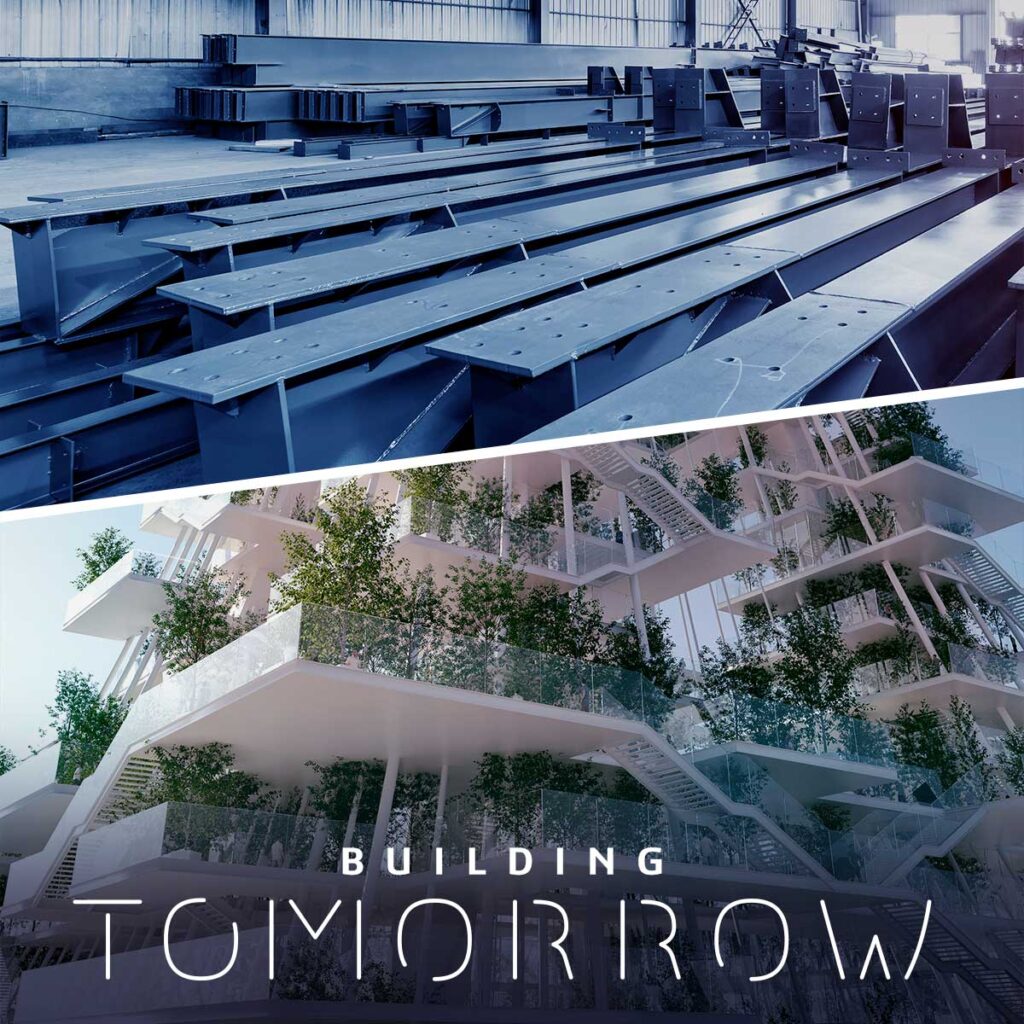By 2050, there will be nearly 10 billion people in the world. These people need housing and infrastructure; and these developments must be safe, affordable – and increasingly, sustainable. A whole new generation of innovative construction approaches is needed.
This was the mission that lay at the heart of our Building Tomorrow project, which you can explore in full here. Across the project, Dassault Systèmes teams sought to demonstrate how virtual solutions can allow us to totally transform how we collaborate on, design, construct and operate buildings with carbon neutrality in mind – even the very biggest structures.
Like the Eiffel Tower, for example.
The carbon challenge for steel
Take steel; strong, flexible, and affordable, it is of paramount importance to the global construction industry. Unfortunately, it is also one of the most carbon-intensive materials in the world. Any redesigned Eiffel Tower would need to accommodate this.
That meant that designers working on the new tower needed to promote sustainability in creative ways when working with steel. To achieve this, they needed to transform the approach to design and operate, right across the steel production value chain.
Around 80%* of a product’s lifetime carbon emissions are determined by decisions made during the design stage. Being able to get a robust and accurate understanding of the environmental impact of options from the outset can help teams make better sustainability decisions.
There are solutions out there for these problems. One of the most powerful ways to minimize carbon emissions, and limit the overall carbon footprint of the tower, is to transform how steel is mined and produced. New hydrogen-based reduction processes are helping solve this decarbonization challenge for steel.
The extended steel ecosystem in the radar
And in parallel to these steel decarbonization measures, optimization tools can identify areas of low efficiency in operations and improve the sustainability of existing steelmaking facilities. By utilizing virtual twins and simulation software, stakeholders can more effectively design, build, and operate those facilities.
And just as they did with managing resource use, the design team were also able to use digital solutions to optimize where they source the steel from, how they would transport it, and how they would improve its use, without compromising strength and performance. Through the 3DEXPERIENCE® platform, teams would be able to collaborate easily with steel manufacturers and suppliers to make sure the carbon footprint is kept to a minimum.
The tower’s designers also used the platform’s Life Cycle Assessment (LCA) capabilities to assign environmental impact scores to each process, from mining to manufacturing, and from plant to tower, and used that information to help shape decision-making and inform future projects. It even can even help define end-of-life operations, helping further limit the environmental impact of steel.
For more information, watch the video below, where our expert explores how we can think about making the right choices around materials use to maximize the sustainability of our projects.
Steel will undeniably continue to be an essential material for global construction. And that means from everyday houses and shops to history defining superstructures, we need to get smarter with our material use.
The mission for the construction sector is to find a way of improving how we make and use steel so that its environmental impact can be kept to a minimum. The work the Dassault Systèmes team undertook on the Building Tomorrow project shows that there are paths forward and a sustainable future for steel is in our grasp.
Learn more about the Building Tomorrow program here:


